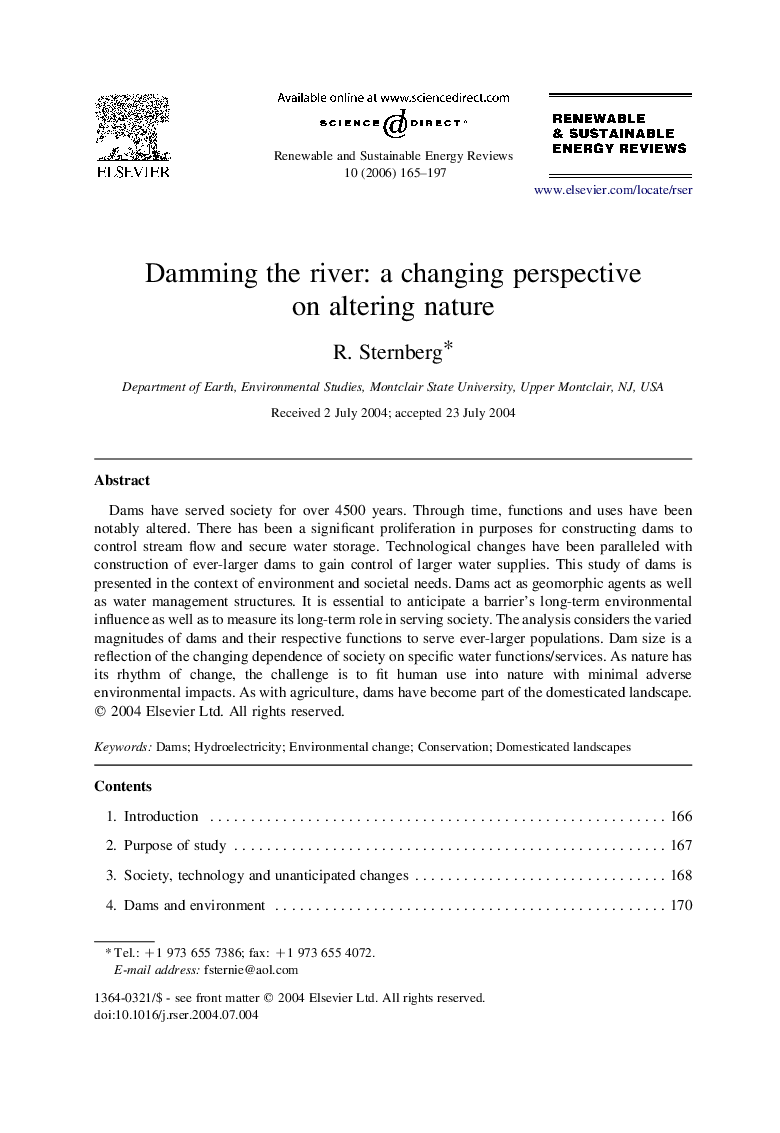| Article ID | Journal | Published Year | Pages | File Type |
|---|---|---|---|---|
| 1752446 | Renewable and Sustainable Energy Reviews | 2006 | 33 Pages |
Dams have served society for over 4500 years. Through time, functions and uses have been notably altered. There has been a significant proliferation in purposes for constructing dams to control stream flow and secure water storage. Technological changes have been paralleled with construction of ever-larger dams to gain control of larger water supplies. This study of dams is presented in the context of environment and societal needs. Dams act as geomorphic agents as well as water management structures. It is essential to anticipate a barrier's long-term environmental influence as well as to measure its long-term role in serving society. The analysis considers the varied magnitudes of dams and their respective functions to serve ever-larger populations. Dam size is a reflection of the changing dependence of society on specific water functions/services. As nature has its rhythm of change, the challenge is to fit human use into nature with minimal adverse environmental impacts. As with agriculture, dams have become part of the domesticated landscape.
